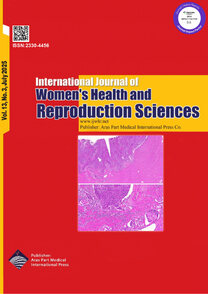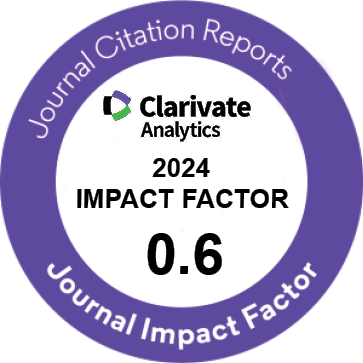| Original Article | |
| Association Between Physical Activity, Menstrual Cycle Characteristics, and Body Weight in Young South Indian Females | |
| Shabnam Omidvar1, Fatemeh Nasiri Amiri2, Mozhgan Firouzbakht3, Afsaneh Bakhtiari4, Khyrunnisa Begum5 | |
| 1Social Determinants of Health Research Center, Health Research Institute, Babol University of Medical Sciences, Babol, I.R. Iran 2Infertility and Health Reproductive Research Center, Health Research Institute, Babol University of Medical Sciences, Babol, I.R. Iran 3Department of Midwifery, Babol Branch, Islamic Azad University, Babol, Iran 4Mobility Impairment Research Center, Health Research Institute, Babol University of Medical Sciences, Babol, I.R.Iran 5University of Mysore, Mysore, India |
|
|
IJWHR 2019; 7: 281-286 DOI: 10.15296/ijwhr.2019.47 Viewed : 5276 times Downloaded : 10702 times. Keywords : Menstrual cycle, Physical activity, Menstruation characteristics |
|
| Full Text(PDF) | Related Articles | |
| Abstract | |
Objectives: Physical activity is considered as an essential component of a woman?s ability to maintain or improve her level of wellness. Nevertheless, women, particularly young girls, usually pay less attention to health-promoting behaviors such as regular physical activity. Given the significance of physical activity in woman? health status, the present study aimed to determine the influence of such activity and body mass index (BMI), especially on menstrual characteristics and menarche age among young females according to their socioeconomic status (SES). Materials and Methods: Data collection included two parts. First, a cross-sectional study was conducted on 1000 healthy and young females aged 11-28 years and standardized self-reporting questionnaires were used to obtain relevant information. Then, purposive sampling technique was utilized to compare the information pertinent to physically active and inactive females or those with sedentary behavior. The data were later analyzed using the chi-square test by SPSS 16. Results: Based on the results, the majority of the young female population were physically inactive and only 121 women (12.1%) enjoyed exercising at least for 30 minutes three times a week or more. In addition, there was a significant correlation between BMI, SES, and physical activity involvement. The cycle length, the regularity of periods, and the severity of dysmenorrhea exhibited a positive association with involvement in physical activity. Conclusions: Overall, physical activity had a positive influence on menstrual characteristics in young females. Therefore, it is important to educate women for regular physical activity in order to modify or reduce menstrual cycle disturbances. |
Cite By, Google Scholar
Google Scholar
PubMed
Online Submission System
 IJWHR ENDNOTE ® Style
IJWHR ENDNOTE ® Style
 Tutorials
Tutorials
 Publication Charge
Women's Reproductive Health Research Center
About Journal
Publication Charge
Women's Reproductive Health Research Center
About Journal
Aras Part Medical International Press Editor-in-Chief
Arash Khaki
Mertihan Kurdoglu Deputy Editor
Zafer Akan























